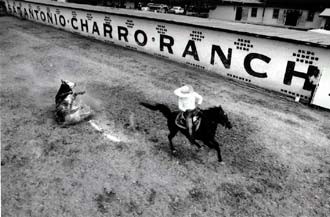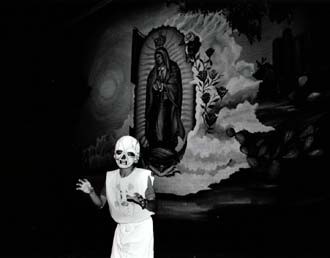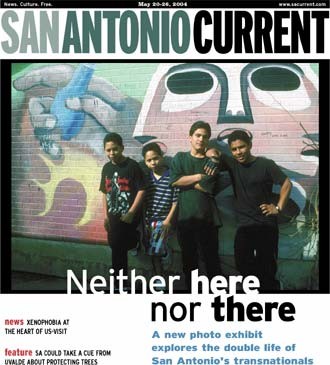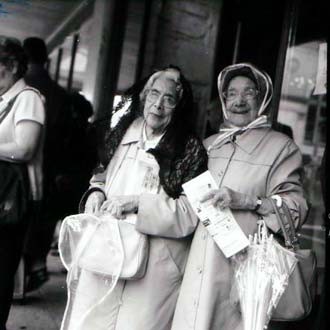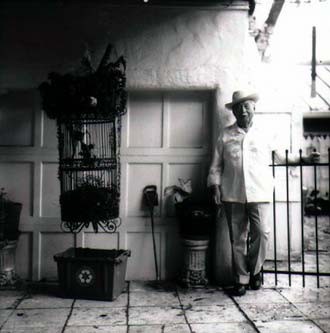|
By Elaine Wolff Harriet Romo vividly recalls boarding a plane bound for Guadalajara, Mexico just before the winter holidays. "It was filled with Mexican men, taking back bags filled with Christmas goodies," she remembers. "Then, in Guadalajara, the market had more Nike bags than traditional Mexian goods." Romo, an associate professor in sociology at the University of Texas San Antonio, where her husband serves as president, has spent the last two years conducting nearly 200 interviews among the large, diverse population known as transnationals - individuals and families who "simultaneously keep feet in both worlds," as one of the field's pioneers poetically described it. The study, "Knowledge, Culture and the Construction of Identity in a Transnational Community: San Antonio, Texas," seeks to understand how local transnationals simultaneously participate in the culture and economic life of two countries. Transnational studies has become a full-fledged field, emphasized by this week's release of a report by the Inter-American Development Bank that shows U.S.-based migrants and immigrants send as much as $28.5 billion annually to Latin America in remittances (money earned here and sent to family abroad). Romo's work, which she has incorporated into her students' curricula, was funded in part by the Annie E. Casey and Rockefeller Foundations.
This conflict is one of the reasons that Romo has chosen to define the transnational community more broadly than initial studies have defined it, to include Mexican-Americans who may not travel to Mexico, but through church, extended family, and other institutions, maintain strong cultural traditions and affinities, such as diet, holidays, and dress. "It may be mental," says Romo, "it may not be physical at all." Because of air travel, the increasing fluidity of money, and the internet, she adds, it's possible to "see videos of a quinceañera that took place yesterday afternoon" on the other side of the border, and feel like a participant. While her enthusiasm reads a little like a Hewlett Packard ad, her dedication to this evolving, and increasingly influential, segment of society is thorough and sincere, and supported by staggering numbers. As the IADB put it, "So people move North by the millions, and money moves South by the billions."
The many factors which contribute to an established transnational population are too complex to enumerate here, but Romo's study notes that changes in immigration laws, including the Immigration Reform and Control Act of 1986, have increased the percentage of different immigration statuses within the same family. In an unintentionally complementary move, the Mexican goverment's recent acknowledgment of dual nationality has made it easier to maintain strong ties in both countries, Romo adds, which transnationals desire. "The people I've interviewed are extremely proud of being Mexican, but they're also very grateful to be able to live and work here ... When people found they could become an American citizen and not sever their ties to Mexico, they were very enthusiastic - `fear of losing their cultural identity` kept some from participating fully in the U.S." Romo, who spent many years in Los Angeles, working with children of immigrant families and conducting studies of a linked community in Mexico, finds that San Antonio, which doesn't have strongly identifed competing cultural groups, has an environment which promotes transnational relationships with Mexico through multiple links, including work and family. "San Antonio's geographical location in the U.S. Southwest," she writes in an academic paper derived from the study, "allows the city to be considered a borderland, despite the fact that it is not located at the U.S.-Mexico border. "San Antonio has always been a Hispanic city," the report continues, amplified by a 45 percent growth in the Latino population from 1980 to 1990.
Masters candidate Tamara Casso, who interviewed women living on the border of Laredo and Nuevo Laredo, recorded the logistical minutiae that comprise transnational lives at various income and social levels. Alicia, a 41-year-old mother with a degree in psychology, lives in Laredo but travels to Nuevo Laredo regularly for medical visits and grocery shopping. The father of 22-year-old Lorena tends golf courses in Chicago, but also breeds fighting roosters to sell in Mexico. Eighty-two-year-old Mona, a stroke victim, is passed back and forth between children on both sides of the Rio Grande. Valeria recently moved across the border to Laredo where her insurance business is located, because she was tired of the hassle and costs involved in daily border crossings. Perhaps most telling of all, the I-35 Wal-Mart in Laredo, where 56-year-old Sara sold undergarments, is the top-grossing store in the country, reports Casso, because of Mexican consumers. Romo does not find what she calls "selective assimilation" alarming. "I'm not worried at all," she says. "Maybe they're not assimilating. They're able to live this rich life because they're drawing from both cultures. "It comes through really strong in our interviews that people want to be in this country because of freedom, order, opportunity. They appreciate the core of what's going on in the U.S. and I think they will contribute to it and make it stronger." • By Elaine Wolff
|

